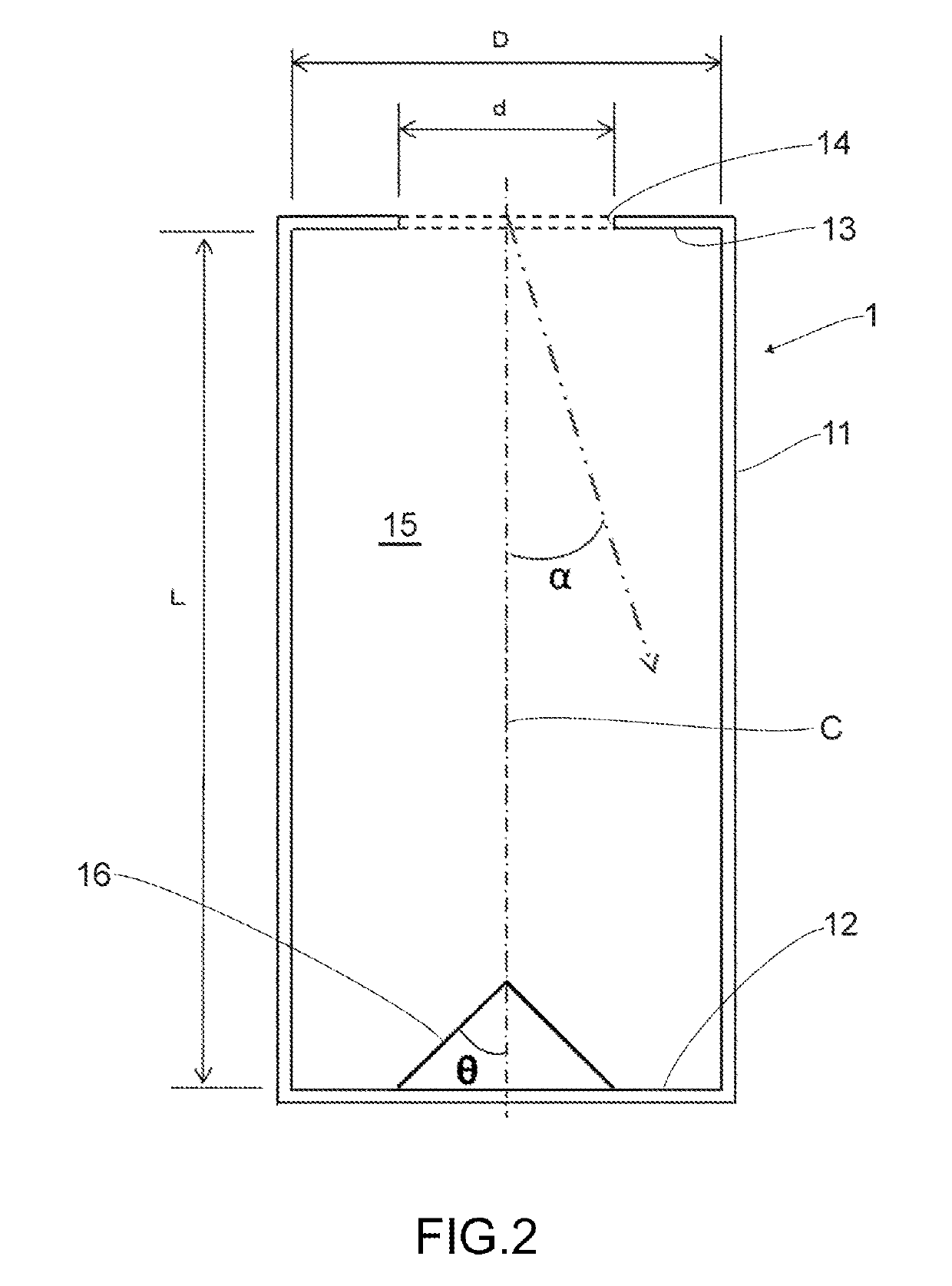Concentrated solar heat receiver, reactor, and heater
a technology of solar energy and heat receiver, which is applied in the direction of lighting and heating apparatus, combustible gas production, and reduction of greenhouse gas, etc., can solve the problems of rapid growth in energy consumption, no heat leakage prevention measures, and no method of thermal decomposition reaction of coals that generate tar or soo
- Summary
- Abstract
- Description
- Claims
- Application Information
AI Technical Summary
Benefits of technology
Problems solved by technology
Method used
Image
Examples
first embodiment
[0061]The reaction apparatus of concentrated solar radiation, as illustrated in FIG. 1 of the present embodiment, is a production system of hydrogen or the like by means of thermal decomposition of coke. Numeral 1 denotes a heat receiver made of a heat resisting material having high solar light absorptivity, such as Inconel, alumina, silicon carbide, stainless steel or the like. The heat receiver 1 includes a side portion 11 forming a cylindrical lateral face; a circular bottom portion 12 connected to a lower end of the side portion 11 to form a base of the heat receiver 1; and a ceiling 13 connected to an upper end of the side portion 11 to form a ceiling plane of the heat receiver 1. Further, through the center of the ceiling 13 is bored a circular aperture 14. That is, the heat receiver 1 has a cylindrical profile with a cylindrical cavity 15 having an aperture 14 bored through to the inside. Note that the aperture 14 is provided with nothing at all, and the cavity 15 is in commu...
second embodiment
[0074]In an embodiment as illustrated in FIG. 3, a concentrated solar radiation, irradiated with a small angle α with respect to the central line C of the heat receiver 1, is to be ejected out of the heat receiver 1 with a small number of reflection. Due to this feature, in an embodiment as illustrated in FIG. 4, there is arranged a conical reflector 16 in a central portion of the bottom portion 12 of the heat receiver 1. It is preferred that the reflector 16 be conically shaped, having a diameter not smaller than d and that an elevation angle θ with respect to the central line C of the heat receiver1 be in a range of 30 to 60 degrees.
[0075]As described above, there is arranged the conical reflector 16 in a central portion of the bottom portion 12, and the reflector 16 has a diameter not smaller than d and an elevation angle θ with respect to the central line C of the cavity 15 is in the range of 30° to 60° degrees. This concentrated solar radiation irradiated with a small angle α w...
third embodiment
[0076]According to an embodiment as illustrated in FIG. 5, in order to smooth out the irradiation intensity of the solar light onto the inner wall of the heat receiver 1, on a bottom portion of the heat receiver 1 is concentrically arranged two circular reflectors 17 having triangular cross sections. By suitably setting the elevation angles θ of the reflectors 17, with respect to the central line C of the heat receiver 1, and properly setting the number of the reflectors 17, solar lights are uniformly reflected by the inner wall of the heat receiver 1.
[0077]According to the first and second embodiments, the reflectors 16 and 17 has a convex outer surface although a reflector having a concave outer surface may be arranged on the bottom portion 12 of the heat receiver 1. If the reflector has a concave outer surface, the number of reflection that the solar light is reflected thereby until the solar light reaches to the side wall is large. Owing to this feature, it is preferred that the...
PUM
| Property | Measurement | Unit |
|---|---|---|
| temperature | aaaaa | aaaaa |
| temperature | aaaaa | aaaaa |
| incident angles | aaaaa | aaaaa |
Abstract
Description
Claims
Application Information
 Login to View More
Login to View More - R&D
- Intellectual Property
- Life Sciences
- Materials
- Tech Scout
- Unparalleled Data Quality
- Higher Quality Content
- 60% Fewer Hallucinations
Browse by: Latest US Patents, China's latest patents, Technical Efficacy Thesaurus, Application Domain, Technology Topic, Popular Technical Reports.
© 2025 PatSnap. All rights reserved.Legal|Privacy policy|Modern Slavery Act Transparency Statement|Sitemap|About US| Contact US: help@patsnap.com



